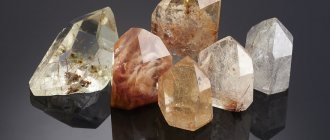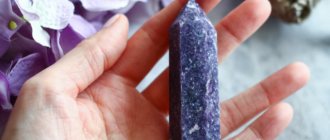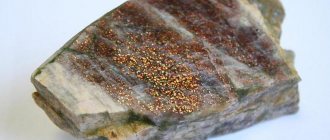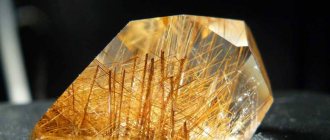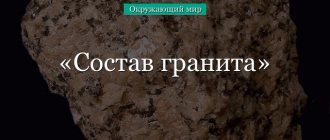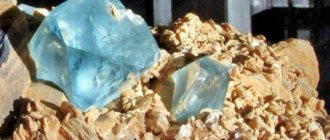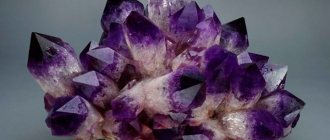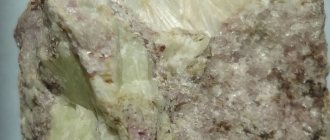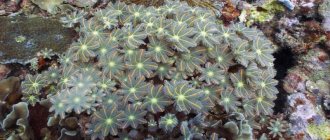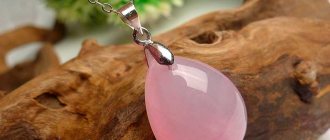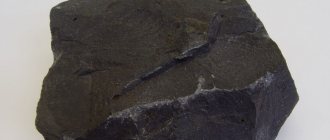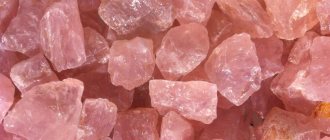4.2
Average rating: 4.2
Total ratings received: 13.
4.2
Average rating: 4.2
Total ratings received: 13.
Earth is one of the rocky planets in the solar system. Its internal structure is studied using geophysical methods, since the substance itself is inaccessible to people. The outer stone shell - the earth's crust - has been studied in detail from the surface and to the depths of mines and quarries. The earth's crust consists of many rocks, which are composed of a variety of minerals. What are minerals, how do they differ, what minerals are common, we will consider in the article.
How it is formed, origin
Quartz has been known to people since ancient times. It is easy to detect and obtain even without the use of special equipment. In addition, it is durable and beautiful. Ancient people made from it not only jewelry, but also tools - axes, knives, chippers.
The conditions for the formation of the mineral are different. It is the rock-forming material for most metamorphic and igneous rocks. Can crystallize directly from acidic magmas. Quartz is also found in sedimentary rocks: dolomites, limestones, etc. In them, it has the forms of geodes (closed cavities), nodules (spherical mineral aggregates), veinlets and fine-crystalline crusts. In the form of mixtures and silicates, it can itself be part of other minerals.
It belongs to the group of glass-forming oxides, that is, glass can consist mainly of this mineral.
Rocks
Rocks are natural compounds consisting of one or more minerals. Most rocks are named the same as the minerals that make them up: oil, mica, gypsum, clay. The minerals that form rocks, as well as their combinations, can be very different.
According to their origin, all breeds are divided into 3 classes:
- Igneous
They are formed as a result of the solidification of magma that has reached the surface of the earth's crust. Under the influence of various external factors and strong temperature fluctuations, compounds with different structures and properties are formed. Igneous rocks, in turn, are eruptive and deep. The latter are characterized by a dense crystal lattice and high strength (granite, basalt).
Rice. 3. Granite
They are formed under the influence of sunlight, atmospheric gases and precipitation, temperature, plant and animal residues. Sedimentary rocks can be clastic (gravel, pebbles, sand, stones), chemical (gypsum, rock salt), organic (limestone, chalk).
- Metamorphic
They are formed under the influence of tectonic vibrations, pressure, chemically active components and high temperature. Metamorphites appear when the earth's crust shifts. In this case, mixing of different rocks and layers occurs.
Primary rocks include only igneous ones, while the remaining 2 classes are formed due to their modification and destruction.
The main difference between any rock and a mineral is its heterogeneity, since its composition already contains one or more minerals. And if the structure of a mineral is based on a crystal lattice, then the rock consists of mineral microparticles connected to each other in a chaotic disorder, without a single structure.
Composition, general properties
Translated from Middle High German, the name quartz means “hard.” This mineral is silicon oxide. The chemical formula of quartz is SiO2 (silicon oxide). Melting point is about +1728 degrees. This information may differ in different sources, since the mineral melt is characterized by increased viscosity and it is difficult to accurately determine the temperature. Quartz is a dielectric , meaning it does not conduct or practically does not conduct electrical current. The density of the mineral is in the range from 2.6 to 2.65 g/cm³. Its hardness on the 10-point Mohs scale is 7.
The crystals have a characteristic hexagonal pseudohexagonal prismatic structure. They are most often colorless, but may have a white color due to the large number of cracks. Due to various impurities, including inclusions of other minerals (for example, iron oxides), they can acquire other colors.
Quartz is characterized by polymorphism, that is, with the same chemical formula, a mineral can have a different crystal lattice structure. Due to its different structure, coesite, tridymite, and cristobalite are found in nature.
Another polymorph, stishovite, was first produced artificially at very high pressure and then discovered in rocks at the Arizona meteorite crater.
For children in grade 2, the description of the quartz mineral should be simpler. We can only give a brief description of it, in accordance with the age characteristics of the students. Information about the chemical formula and composition of a mineral is still difficult for them; they are studied in high school. In a course called "The World Around You," a message might include, for example, information about types of minerals. This mineral has many types and they are quite attractive in appearance. Therefore, such information is of great interest to children aged 7-8 years.
Gems
People call bright, beautiful stones gems. They are used to make jewelry and crafts. Some minerals are so scarce in nature and so difficult to obtain, which is why products made from them are very expensive, these are precious (or jewelry) stones. Those that are more common are semi-precious (topaz, malachite, opal, amethyst). Even more often - ornamental, they are used to make figurines, boxes, souvenirs (agate, jasper, selenite, onyx).
There are not so many precious stones, for example, diamond, sapphire, ruby, emerald. The stones are polished, applying edges to them, and this makes the natural piece of mineral much more beautiful. A cut diamond is called a diamond.
But stones are good for more than just jewelry. Glass cutting tools are made from waste from diamond processing, which is known to be the hardest mineral. Previously, rubies were used in the production of lasers, but now they have been replaced by artificial rubies.
Turquoise is a beautiful slightly bluish or bright blue mineral with dark veins. Interesting presentation about turquoise here >>
Malachite is a bright green mineral with a beautiful dark pattern. Previously, it was mined in large quantities in the Urals, in the mountains. Bazhov’s tales glorify the work of craftsmen processing Ural malachite. Malachite was used to make jewelry, boxes, and even vases and figurines.
Amber is fossilized tree resin. It retains its yellow-orange color and transparency. Sometimes in amber you find various insects that got stuck in the resin many years ago.
Coral is the skeleton of sea creatures, coral polyps. Corals look like petrified, porous tree branches, ranging in color from yellowish to red and even black. Coral is used to make jewelry.
Pearl is not a mineral or a rock, although it looks like a round pebble. Pearls are produced by seashells - bivalve mollusks. Each pearl is covered with a layer of mother-of-pearl, it is smooth and shiny. There are white, pink and black pearls.
Stones are also used in construction as building materials (limestone, sandstone) and finishing materials (granite, marble).
Varieties, their diversity
Interesting fact : there are many varieties of quartz (more than two dozen), which differ from each other primarily in color. So, this mineral can look like colorless, transparent crystals (rock crystal), a dark opaque semi-precious stone of brown or red-brown color with white and black or pinkish and yellowish patterns, respectively (onyx).
And these are not all examples. Additional material for 2nd grade children on the properties of quartz stone may include brief information about its varieties such as chalcedony, citrine, as well as cat's, tiger's and hawk's eyes. The names of the latter species arouse keen interest among students. The report may indicate that many varieties of the mineral are used to make jewelry. Carefully selected illustrations will help supplement the information and make the topic truly interesting for children.
Modern use of quartz in everyday life
The strength of quartz allows it to be used in jewelry making. Pebbles cut in a special way are inserted into brooches, earrings and bracelets.
Craftsmen have long learned to use large pieces of quartz to make items for home decoration: in many homes today you can see quartz vases, figurines or ashtrays.
Many have also heard the expression “quartz watch”. It is not by chance that some types of watches are called quartz - in the clockwork of such watches, quartz crystals are used to control the accuracy of the movement.
How and where is quartz mined?
This is a very common mineral, its deposits are not uncommon. Deposits have not yet been discovered only in Antarctica, but it is only a matter of time.
However, not all of them are of industrial importance. The mineral is mainly supplied to the world market by the following countries:
- USA.
- Brazil.
- Australia.
- Sri Lanka.
- Madagascar.
- Explosive. This is the least effective method, which is also harmful to the environment. As a result, as a rule, crystals of low quality are obtained, in the form of fragments, with cracks and chips. However, this method is still relevant due to its low cost.
- Air cushion method. It consists in the fact that the rock splits under the influence of high pressure. It is formed by pumping air into a special container placed in a well in the field. With this method, damage to the rock is insignificant.
- Stone cutter method. The most gentle, but also the most expensive. Involves the use of special equipment, the cost of which is quite high.
In addition, many countries are recognized leaders in the extraction of one type of mineral. Thus, in Russia, in the Southern Urals, the highest quality aventurines in the world are mined. It is a type of quartz that is greenish in color and has no sparkle. Beautiful rock crystal crystals are mined in Italy and France. In addition to Australian and Brazilian ones, amethysts from Germany and Armenia are also in demand among jewelers.
Quartz can be mined in three ways, depending on the characteristics of the deposit:
In addition, quartz is synthesized artificially.
Application of the mineral
It belongs to widespread mineral resources. Artificial and natural quartz are used in the following areas:
Artificial crystals
Artificial quartz has a number of advantages over natural quartz: higher chemical purity and a homogeneous structure caused by a more uniform distribution of impurities. In addition, single crystals are grown industrially, while twinned crystals are common in nature. Single crystals are more suitable for use in the optical and electronics industries.
For jewelry making, artificial quartz crystals are also more convenient, since during the growing process they can be given almost any color and shade saturation. You can also grow crystals with intended smooth transitions from one color to another. It is interesting that industrially it is possible to obtain colors that do not occur in nature or are very rare. These are blue, cyan and green quartz. For 2nd grade children, this information will also undoubtedly be interesting.
